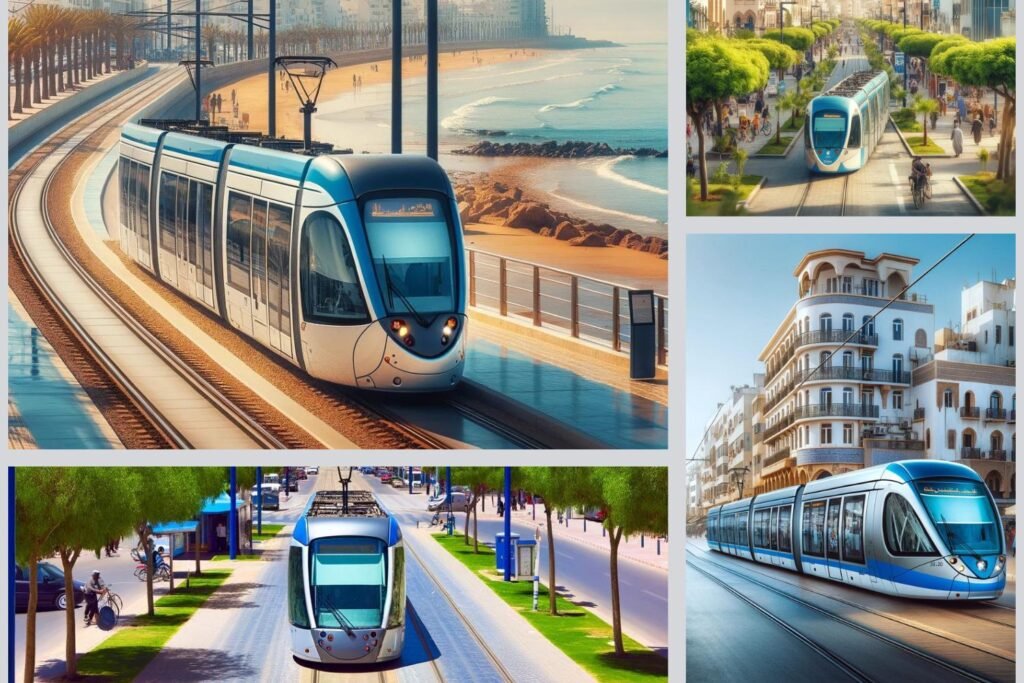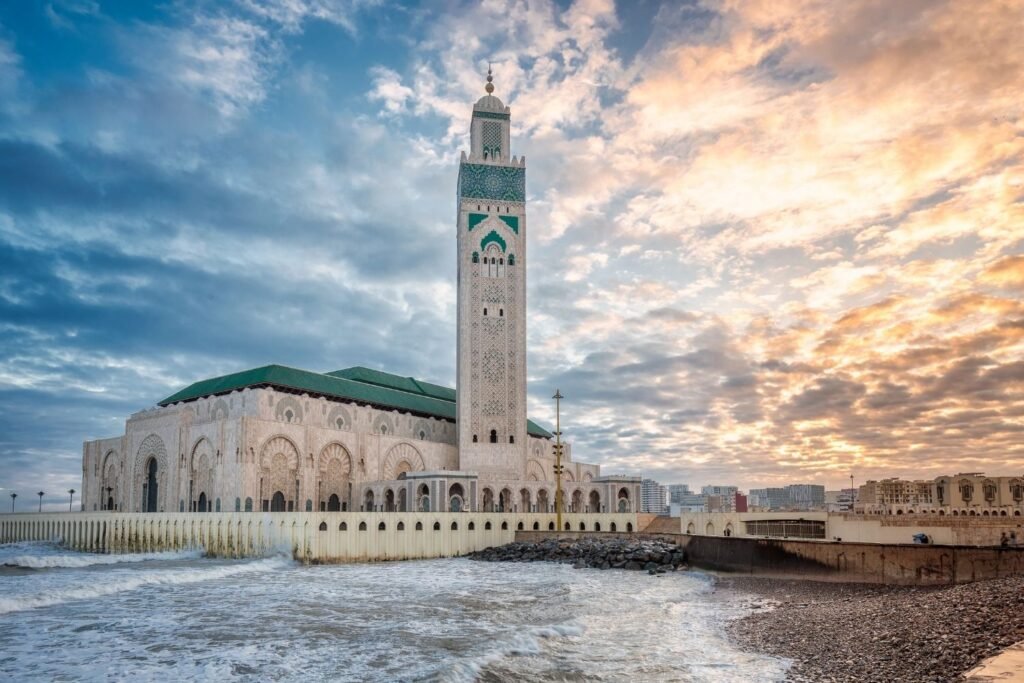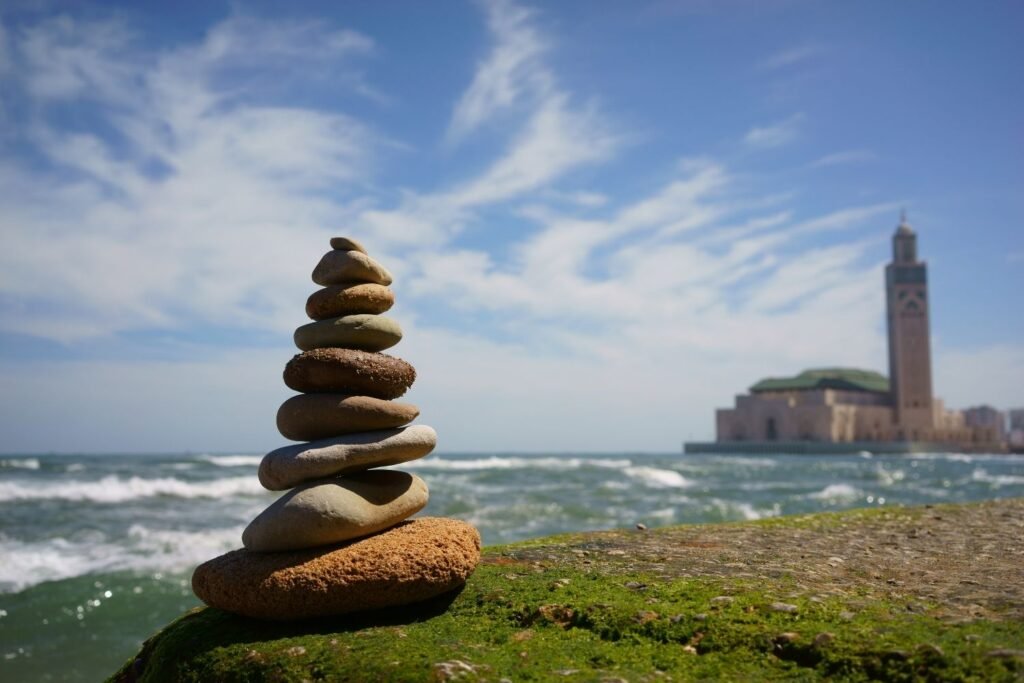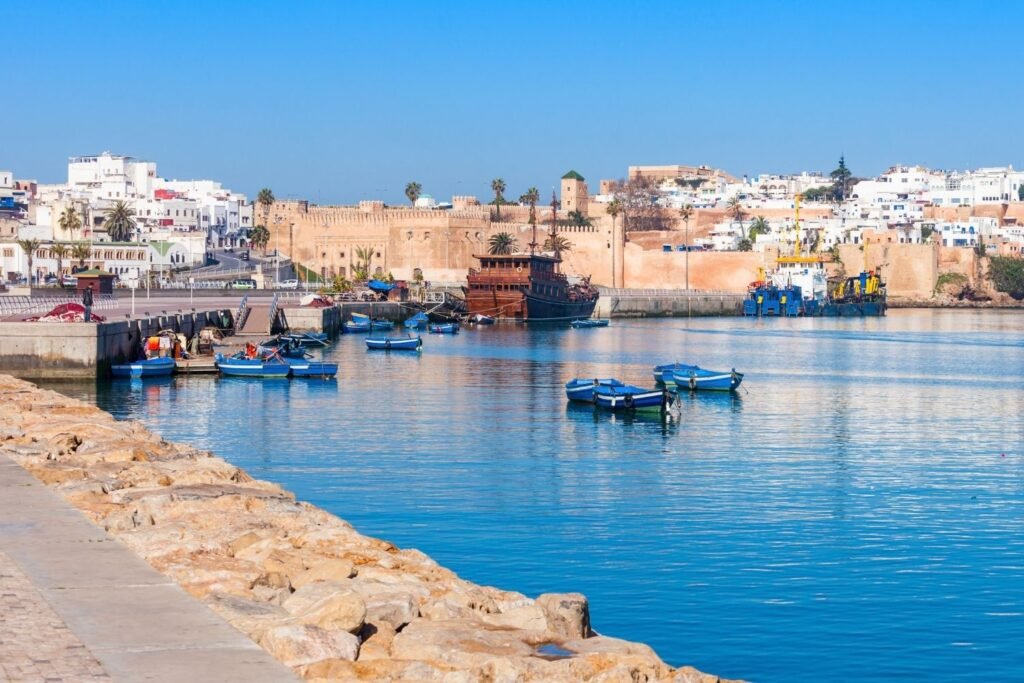Morocco tramway
Date: May 10, 2024 By admin Categories: Uncategorized No comments
MOROCCO tramway
In Morocco, the tramway system serves as a modern public transport solution in major cities like Casablanca and Rabat. These tramways are part of efforts to provide efficient, eco-friendly, and reliable transportation options to urban residents and visitors. Here’s a brief overview of the tramway systems in these two cities:
Casablanca Tramway
– Launch: The Casablanca tramway system began operations in December 2012.
– Network: It currently has two lines that serve many of the city’s key districts, helping to alleviate road congestion.
– Expansion: Plans for expansion are ongoing, aimed at increasing the reach and capacity of the system to better serve the growing population.
Rabat-Salé Tramway
– Launch: This system started in May 2011 and connects the twin cities of Rabat and Salé. Rabat-Sale tramway.
– Lines: It includes two lines that cross the river Bou Regreg, linking several important residential and commercial areas.
– Purpose: The tramway supports the cities’ public transport infrastructure, easing traffic and providing a reliable alternative to buses and taxis.
Both tram systems are notable for their modern, blue and white trams, which have become a common sight in their respective cities. They play a crucial role in the public transport network, enhancing urban mobility and contributing to environmental sustainability by reducing the reliance on private vehicles.

Morocco’s tramway systems
Expanding on the details of Morocco’s tramway systems, here are further insights into their operation, design, and impact on urban mobility:
Design and Technology
– Tramcars: The tramcars are designed to accommodate a large number of passengers, offering both seating and standing room. They are equipped with air conditioning and accessibility features for disabled passengers.
– Track and Infrastructure: The tracks are mostly at-grade, with a dedicated right-of-way that allows trams to avoid much of the city’s traffic congestion. The infrastructure also includes modern, well-designed stations that are spaced to optimize access and convenience for passengers.
Operations
– Frequency and Timings: Trams run at regular intervals, often as frequently as every five minutes during peak hours, making them a reliable mode of transportation.
– Ticketing: Both systems employ an electronic ticketing system that allows for seamless travel. Passengers can purchase tickets from machines at stations, and options usually include single rides, day passes, and longer-term passes.
Environmental and Social Impact
– Eco-Friendly Transport: The tram systems in Morocco are powered by electricity, making them more environmentally friendly compared to traditional diesel buses. This helps in reducing the cities’ carbon footprint and pollution levels.
– Urban Development: The tramways have encouraged development along their routes, with new businesses and residential areas popping up. This development is often planned to maximize access to tram services, thereby promoting sustainable urban growth.
– Cultural Integration: The tram systems have become a part of the daily life of the residents, integrating into the cultural and social fabric of the cities. They are not only a means of transport but also a symbol of modernity and progress in urban Morocco.
Future Prospects
– Expansion Plans: There are ongoing discussions and plans for extending the existing tram lines and adding new ones to better serve underserved areas. This includes potential connections to new neighborhoods and important transport hubs like airports and train stations.
– Integration with Other Modes: Efforts are being made to better integrate trams with other modes of public transportation, such as buses and taxis, to create a comprehensive, efficient, and user-friendly public transport system.
Economic Benefits
– Job Creation: The construction and operation of tramway systems have created numerous jobs, from construction workers during the initial building phases to ongoing positions in tram operation and maintenance.
– Boost to Local Economy: Businesses along tram routes often experience a boost due to increased foot traffic and accessibility. This can help invigorate local economies and support small businesses.
Challenges and Considerations
– Construction Disruptions: The initial construction phase of tram lines can cause significant disruptions in urban areas, including traffic detours and impacts on local businesses. Managing these disruptions and maintaining clear communication with the public are crucial.
– Funding and Investment: Developing and expanding tram systems require substantial investment. Funding these projects often involves a combination of public and private sources, and finding the right balance can be challenging.
Cultural Impact
– Changing Urban Lifestyles: The tramway encourages a shift towards public transit use, which can lead to changes in urban lifestyles, reducing reliance on private cars, and fostering a more communal urban environment.
– Heritage and Modernity: Integrating modern infrastructure like tramways into historic cities like Rabat and Casablanca involves careful planning to preserve the architectural heritage while providing modern conveniences.
Technological Enhancements
– Smart Technology: Future expansions and upgrades might include the integration of smart technologies, such as real-time tracking systems for trams, mobile app integration for ticket purchases and schedules, and enhanced security features.
– Sustainability Initiatives: Alongside using electric power, tram systems could incorporate other sustainable practices like regenerative braking systems or solar-powered stations.
The development of tramway systems in Morocco is part of a broader trend towards urban modernization and sustainability, reflecting both the challenges and opportunities of integrating large-scale transport infrastructure into the unique social, economic, and cultural landscapes of Moroccan cities.
The success of the tramway systems in Casablanca and Rabat has set a precedent for other Moroccan cities to consider similar solutions to their transportation challenges, reflecting a broader shift towards sustainable urban mobility in the region.
You can also check this page about Morocco Transportation map.


















